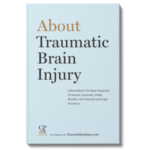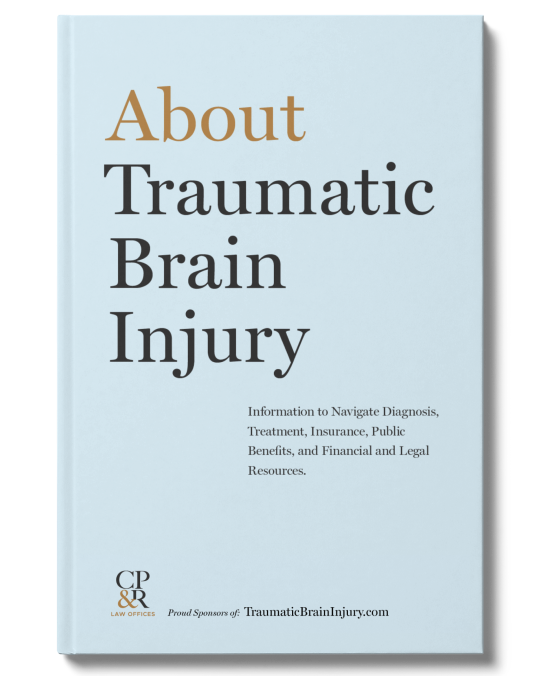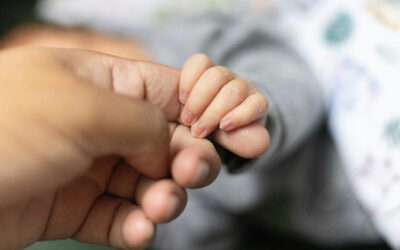When Traumatic Brain Injury Is Caused by a Defective Product
Product liability laws across all 50 U.S. states hold manufacturers, distributors, and retailers accountable for TBI caused by defective and dangerous products. Read on to understand your rights.
Request our Free Book on Traumatic Brain Injury

Product liability or consumer safety laws, by one name or another, exist across the United States. Although each state’s law is unique, the basic policy of product liability law is typically consistent: A product may be found defective if it lacks any element (including a warning) necessary to make it safe. Manufacturers, sellers, and distributors of defective products are liable, or responsible for injuries caused from dangerous products.
TBI injuries often result from unsafe products that can lead to a claim against the sellers of defective products. Manufacturers and sellers typically have product liability insurance, and because TBI injuries can result in significant disabilities, cases involving defective products can result in very substantial recoveries for the injured person and their family.

Recoveries for personal injury claims caused by product defects can help pay for the lifetime of costs and damages related to TBI. And people with TBI will need the financial assistance this can provide. In catastrophic injury cases, health insurance, Workers’ Compensation insurance, and government benefits only cover a small part of the total damages. Often, the only resource available to obtain the necessary financial support is an injury claim. Therefore, whenever there is a disabling TBI that involves a product, experienced lawyers and their team of consultants should be consulted to carefully investigate the circumstances of the injury.
Product liability laws hold manufacturers, distributors, and retailers accountable for injuries caused by defective and dangerous products. While the laws differ in the fifty states, typically a plaintiff must prove that the product was defective, that the defect existed when the product left the seller’s control, and that the defect caused harm to the plaintiff. The purpose of the law is to ensure that products are safe for consumers. Some states have additional requirements, but in the end, each case depends on the facts and the law.
The lawyers at Cohen, Placitella & Roth have made substantial recoveries for our clients in product liability cases, making a difference in their lives.
Definition of a Product
In product liability law, a product is broadly defined as any tangible item that is produced or manufactured for sale. This encompasses a wide range of items provided to consumers, including goods intended for personal use or commercial purposes or any other form of distribution. For legal purposes, a product may include finished goods, raw materials, and components used in the manufacture of other products, like a seat belt in an automobile. In the case of a defective seatbelt, the sellers of the seat belt (the component) and the car (the finished product) may be held responsible if a defective seat belt causes an injury. The product may be sold or leased. The person injured does not have to be the buyer or lessor, just someone who would be expected to use the product (an intended user). The packaging for a product may also be considered a product. The critical aspect of a product liability claim is that the product must be defective as designed or made (which includes inadequate warnings or instructions). Some states define a defect as failing to include anything to make the product safe or including something that makes the product unsafe.
Product liability claims arise from diverse types of products spanning multiple industries and consumer categories.
Automotive Products: Cars, tires, seat belts, air bags, brake systems and other auto parts (components) can lead to strict liability claims if they have design flaws or manufacturing defects that cause injuries.
Medical Devices: Products such as pacemakers, hip implants, and surgical tools can result in liability claims if they malfunction or cause injury due to inadequate testing or improper labeling.
Pharmaceuticals: Prescription medications may lead to liability for adverse side effects or health complications that were not adequately communicated to consumers.
Household Products: Items like cleaning chemicals, appliances, and furniture can be implicated if they are found to be hazardous or if they fail to meet safety standards.
Toys and Children’s Products: Items designed for children are heavily scrutinized, and manufacturers can face liability for defects that pose risks and cause damage.
Food and Beverage Products: Contaminated foods or drinks can lead to significant liability claims when consumers suffer from contamination, food-borne illnesses, or allergic reactions to ingredients that were not disclosed.
Liability of Sellers of a Defective Product
 In those states that adopt products liability laws, sellers include any individuals or entities that market or distribute products to consumers, including manufacturers, wholesalers, distributors, retailers, and even lessors. A seller of a product may be any of the parties involved in the supply chain before a product reaches a consumer. When a product is sold, all parties in that chain can potentially be held liable for defects because they are each deemed to have a responsibility under the law to ensure the safety and reliability of the product.
In those states that adopt products liability laws, sellers include any individuals or entities that market or distribute products to consumers, including manufacturers, wholesalers, distributors, retailers, and even lessors. A seller of a product may be any of the parties involved in the supply chain before a product reaches a consumer. When a product is sold, all parties in that chain can potentially be held liable for defects because they are each deemed to have a responsibility under the law to ensure the safety and reliability of the product.
Allowing consumers the right to make claims against all sellers is vital because it provides an additional measure of protection for consumers against injuries caused by unsafe products. When a defective product causes harm, the ability to pursue claims against all sellers ensures that victims can seek full compensation for their injuries, medical costs, and other damages from all the available insurance coverage.
Most products are insured against defects, and in the event of injury, a valid claim can provide needed financial resources when serious injuries occur. Our office has successfully represented many clients who suffered traumatic brain injuries due to defective products.
Approximately 8.6 million sports and recreational injuries are reported in the US every year, with over 16 percent of those injuries involving the head and neck. According to the United States Public Interest Research Group Education Fund (US PIRG) report, product injuries continue to rise in the US, and “more injuries were linked to unsafe products in 2024 than in any of the previous seven years” and that the total is “up dramatically” from the number reported in 2023, and is “more than double the number of injuries reported five years ago”.
Examples of Defective Products That Cause TBI
Defective Carbon Monoxide Detectors and Defective Heaters
Leaks of natural gas can cause carbon monoxide poisoning and brain injury. These leaks can be caused by defectively manufactured heaters (or heaters that have not been repaired or inspected properly). Defective carbon monoxide detectors that do not do the job will similarly cause brain injury.
Source: H. Lim et al, “Factors Predicting Acute Brain Injury in Cases of Carbon Monoxide Poisoning: A Prospective Registry-Based Study,” Toxics 9, no. 6 (2021).
Trampolines
Defective backyard trampolines and negligent trampoline parks pose significant safety hazards and lead to serious injuries for users, particularly children. Children under age six are at the highest risk of injury. The 2010–2016 National Hospital Ambulatory Medical Care Survey reports approximately 2.7 million annual ED visits by individuals aged 5–24 years for sports injuries related to trampolines. For many years, the American Academy of Pediatrics (AAP) recommended that trampolines not be used at home or in a park at all.
Common trampoline defects include issues related to the design, such as inadequate safety padding, unstable frame construction, or insufficiently reinforced springs that can fail under stress. Additionally, manufacturing defects can occur, where improper materials or assembly methods compromise the trampoline’s integrity. When these defects lead to injuries — resulting from structural failures or users being ejected from the trampoline — injured individuals may have grounds for a products liability claim.
All-Terrain Vehicles
Defective and dangerous all-terrain vehicles (ATVs) can cause severe brain injuries. The Consumer Product Safety Commission (CPSC) reports over 100,000 emergency room visits and over 1,000 deaths per year related to ATV incidents. Issues such as unstable handling, a high center of gravity, and insufficient braking systems contribute to rollovers and accidents.
BB Guns and Air Rifles
Defective and dangerous air rifles, paintball guns, BB guns, and other non-powder guns pose significant risks of injuries, including brain injuries. These risks are heightened for children and adolescents, who may not fully understand the potential dangers associated with these weapons. The AAP reported over 20,000 injuries annually associated with the use of these weapons.
Due to their ability to discharge projectiles at high velocities, these weapons can cause severe harm. Additionally, the CPSC has raised safety concerns regarding defective design and manufacture of these weapons, such as the Crosman Air Rifle, which was recalled in 2024 because a loaded air rifle, even when not cocked, can discharge unexpectedly if jolted or dropped.
Snowmobiles
Defective and dangerous snowmobiles can pose substantial risks for riders, leading to severe injuries, including traumatic brain injuries. There are over 200 deaths and over 14,000 injuries suffered in snowmobile incidents annually. Studies have also shown that riders who do not wear appropriate safety gear, such as helmets, are at a heightened risk for brain injuries in the event of an incident; one medical study reported that 45 percent of those patients sustain head injuries.
Source: P. Whiting et al, “Orthopaedic Injuries from Snowmobile Accidents: A Multi-Centre Analysis of Demographics, Injury Patterns, and Outcomes,” European Journal of Orthopaedic Surgery & Traumatology: Orthopedie Traumatology 29, no 8 (2019).
When not designed or manufactured correctly, snowmobiles may suffer from mechanical failures, inadequate safety features, or improper handling characteristics, which can result in collisions or rollovers. Additionally, recalls have been issued for certain models due to defects that could compromise rider safety; for example, certain snowmobiles were recalled by the manufacturer because the throttle release switch failed to disengage when pressed, leading to loss of control.
Helmets
Defective helmets used in sports and recreational activities can significantly contribute to the occurrence or exacerbation of brain injuries. Helmets are designed to absorb the impact of energy and mitigate the forces transmitted in collisions or falls. However, if a helmet is defective, it may fail to provide the necessary protection and increase the risk of TBIs.
Many helmets fail to meet safety standards established by the CPSC due to poor materials, defective design, insufficient strength, inadequate manufacturing, and failure to meet the impact requirements. For example, in January 2024, the CDC announced the recall of the Retrospec kids bicycle helmets due to a risk of head injury and violation of the federal safety regulations. In January 2023, Comoto Holdings issued a safety recall for certain motorcycle helmets (the BILT Vertex and Route helmets), which did not provide adequate impact protection in the event of a crash and could potentially increase the risk of head injury. In 2016, Head USA recalled its ski and snowboarding helmets because the helmets did not meet safety standard impact requirements.
Ladders
Defective and dangerous ladders represent significant hazards in both home and work settings, often leading to severe injuries. Falls from ladders and scaffolds are among the leading causes of injuries and fatalities in the construction industry and at home, and brain injuries are a common outcome of falls from heights. According to the CDC, “each year in the US, more than 500,000 people are treated and about 300 people die from ladder-related injuries.” According to the National Institute for Occupational Safety and Health, falls account for a substantial percentage of workplace injuries, with ladders frequently cited as contributing factors.
Ladder injuries can result from structural failures, improper assembly, or lack of safety features, such as stabilizers or locking mechanisms. A report issued by the Annual International Occupational Ergonomics and Safety Conference demonstrates the types of design and manufacturing defects that cause ladder rungs to fail even when safely used due to defects.
Scaffolds
Defective scaffolds can pose serious risks and cause falls and significant injuries, including traumatic brain injuries. Scaffolds are essential for construction and maintenance work, but when they are improperly designed or erected, the risk of accidents increases. On many construction sites, scaffolding is supplied and erected by firms that are also responsible for the scaffold’s safety.
Common errors that lead to falls from scaffolds include inadequate assembly or alignment of the scaffold components, failure to install guardrails and toe boards, and failure to ensure a stable and level base before use. Additionally, overloading the scaffold beyond its capacity and allowing unauthorized personnel to access the work areas can further increase the risk of falls and serious injuries.
Elevators and Escalators
Elevator and escalator failures can pose significant risks to users. According to the Bureau of Labor Statistics and the CPSC, “elevators and escalators kill about 30 and seriously injure about 17,000 people each year in the United States,” and “elevators cause almost 90 percent of the deaths and 60 percent of serious injuries”, as compared to escalators. The owner of the property where the elevator or escalator is located and the repair and maintenance contractors may have joint responsibility for the safety of this equipment.
Elevator and escalator failures often occur due to mechanical malfunctions, improper maintenance, or manufacturing defects. For elevators, common issues may include malfunctioning brakes, door failures, and electrical problems that can lead to sudden drops, erratic movements, and unintended door closures. Escalator failures, on the other hand, can arise from worn-out components, misalignment, or failure to stop properly, which may cause users to trip or fall.
Toy-Choking Hazards
According to the CDC, there are approximately 198,000 toy-related injuries annually. Although riding toys, such as tricycles and scooters, are the leading cause of toy-related injuries, another significant cause of toy-related deaths is choking or suffocation.
Toys aimed at young children can pose significant choking hazards due to their small parts and easily breakable components. As children explore their environment, they often place objects in their mouths, increasing the risk of choking on toys that are not age-appropriate or that contain detachable small parts. Action figures, building blocks, and toy vehicles have been linked to choking incidents. When children try to chew or swallow pieces, the components can obstruct their airways and can lead to severe injuries, including brain injuries. Choking leads to lack of oxygen that can cause brain damage within minutes.
Lead
Lead exposure can cause brain damage, and lead exposure is a particular risk for children. Lead exposure can be found in a variety of sources, including lead-based paint, which is found in 97 percent of buildings constructed before 1940. Other sources of lead exposure include toys, crystal glassware, lead-glazed pottery, and even some hobby equipment and cosmetics. Lead paint gets into children’s systems when they eat or handle peeling paint chips or other items covered with lead-based paint or dust. In lead paint cases the owners, property managers, and sellers of real estate are responsible for the lead paint conditions that cause brain injury.
Top-Heavy Furniture and Appliances
Top-heavy furniture and appliances are a significant risk for injury due to their potential to tip over. Tall bookshelves, dressers, televisions, refrigerators, and stoves can become unstable during normal or expected use of the furniture or appliance when not properly anchored. A CPSC report on furniture, TV, and appliance tip-over injuries and fatalities shows an annual average of 22,500 Americans who required treatment in the Emergency Department — 44 percent of whom were children under 18 years of age. According to the CDC, a child is sent to the emergency room on average every 60 minutes in the US because of defective furniture.
Tipping occurs often when a child climbs on or interacts with the furniture or inadvertently pulls on a component, such as a drawer, that destabilizes the entire piece. When a heavy piece of furniture falls, the impact can cause head injuries, fractures, burns, and even fatalities, especially in small children who may not have the ability or strength to move away from the falling object.
Infant and Toddler Furniture and Bedding
Defective baby furniture and bedding can threaten the safety and well-being of infants and toddlers. Cribs, changing tables, and bedding should meet the highest safety standards, but unfortunately, these products often do not. Despite rigorous testing and regulations, baby furniture and bedding products are often recalled, illustrating that the problem is pervasive. To monitor recalls, especially on any used furniture or bedding that may be gifted, parents and caregivers should always research products at the CPSC’s recall website. Defects can lead to serious injuries, including brain injuries and fatalities.
Common issues include structural defects (weak frames or poorly secured components that collapse), toxic materials (harmful chemicals or materials that cause respiratory problems and brain injury), or design flaws that allow children to get trapped, strangled, suffocated, or otherwise be injured.
Some items recently recalled include:
- 4.7 million units of the Fisher-Price Rock ’n Play Sleeper, which caused multiple infant injuries and fatalities due to suffocation
- the IKEA SUNDVIK Changing Table/Chest, which was prone to collapsing if not properly secured
- 36,000 units of the GracoTable2Table 6-in-1 Highchair, which was prone to tipping due to unstable legs
- 600,000 units of Delta Enterprise Cribs, which were missing pegs that would secure a drop-side rail, posing a risk of entrapment and suffocation
Drowning and Near-Drowning Incidents
Drowning occurs quickly and often silently. Brain cells begin dying after less than five minutes without oxygen, and brain hypoxia quickly leads to severe brain damage or death. Near drowning occurs when an individual is unable to breathe under water for a period sufficient to cause their major body systems to shut down from lack of oxygen. In young children, this can occur in mere seconds. According to the CDC, “more children ages 1–4 die from drowning than any other cause of death; drowning is the second leading cause of unintentional death for children ages 5–14; and every year in the United States, there are over 4,000 unintentional drowning deaths.”
Drownings among children are tragic and often preventable incidents. Pools can be defectively designed or maintained (lack of proper fencing, gates, or covers), which allow children easy access to the water without supervision. Children can also become trapped by pool drains, ladders, or other submerged structures, which can prevent them from surfacing to breathe. In addition, inappropriate use of life jackets in open water can significantly increase the risk of drowning. Using properly fitted life jackets is crucial, especially while boating.
Pools require constant supervision from trained professionals. When children are left unattended even for a brief time, the risk of drowning significantly increases. A major cause of increased drowning incidents at pools and beaches is lack of supervision by trained lifeguards. Our law firm has represented clients and made multimillion-dollar recoveries where untrained, unqualified, inattentive lifeguards failed to do their job and caused injury and death. There has been a lifeguard shortage for many years in the US, which has worsened since the pandemic. This shortage has threatened safety at pools and beaches across the US, according to the American Red Cross. As a result of this shortage, some pools have relaxed the standards required to be a lifeguard, and others have hired lifeguards with no training or experience whatsoever. Inadequate preparation to respond to water emergencies, such as not knowing how to perform CPR, can reduce the likelihood of a timely and effective response in drowning incidents. In addition, poorly qualified attendants or certified lifeguards can become distracted by activities like talking, using smartphones, or reading on the job.
Diving Accidents
Dual TBI and SCI injuries are common in diving accidents. SCI is the second most common injury after TBI and can cause quadriplegia or paraplegia. Diving accidents usually result in severe disabilities.
Source: J. Yun et al, “Rehabilitation Outcome in People with Spinal Cord Injuries Resulting from Diving in South Korea.” Spinal Cord Series and Cases 8, no 40 (2022).
Diving injuries can result from many causes, including defectively designed or manufactured diving boards and swimming pool ladders. Diving into shallow water and into above ground pools is also a major cause of head, neck, and spinal injuries. Areas where diving is known to be unsafe should be clearly marked with “No Diving” signs, and those rules must be strictly enforced by a responsible adult or a trained lifeguard. Misjudging the depth or not knowing the depth can lead to severe trauma. Inexperienced divers who are unfamiliar with proper diving techniques are more likely to make mistakes that result in injury, and horseplay or running dives can increase the hazardousness, speed, and impact from a dive, leading to a higher risk of injury.
Prescription Medications
Health care providers must be vigilant in monitoring the combination of medications prescribed. They need to be aware of the side effects, maintain open communication with patients, and adjust dosages to ensure the optimal balance between therapeutic benefits and potential neurological risks. Adverse drug effects that are overlooked or misdiagnosed pose significant risk to the patient because the neurologic side effects can result in permanent, irreversible conditions.
Medication management of prescriptions by health care providers is important because it ensures that all medications taken in combination and as prescribed are taken safely and effectively, reducing the risk of errors and adverse drug events. Some medications can harm the central nervous system and peripheral nervous system. For example, certain anticonvulsants at higher doses can lead to symptoms like a lack of muscle coordination (ataxia) and involuntary eye movements (nystagmus). Antidepressants also have complex interactions with the nervous system and can cause cognitive impairment and confusion, and certain SSRIs can result in increased anxiety or agitation or even make individuals more prone to seizures. Benzodiazepines are another example of medications that affect the nervous system. Because these medications have a sedative effect, they can result in short-term drowsiness, dizziness, fall risks, and potential addiction, and long-term or high-dose use can make activities like driving dangerous. Certain pain medications (opioids) can cause respiratory depression, loss of consciousness, and, in severe cases, brain injury and death. The interplay between the health benefits when medications are professionally managed, and the potential for severe injury when they are not, underscores the importance of medication management by the entire medical team.
Whenever a product is or may be involved in a TBI, the family should promptly contact an experienced lawyer, secure the necessary evidence, and begin an investigation into the facts.
Immediate Action Required to Secure Evidence of a Defective Product
After any disabling TBI, whether caused by a fall, a motor vehicle accident, or a defective product it is important to gather the relevant evidence. This should be done as soon as possible. Experienced lawyers, for important reasons, do this every day. Accordingly, the disabled person (as able) or the family should consult an experienced lawyer as soon as possible.
For example, in the SUV rollover/roof crush case discussed earlier, it was critical to secure the vehicle to prove that the cause of the injury was the defective vehicle and to eliminate other potential causes of the injury. For the same reason, it was important to examine the site of the crash as soon as possible to gather photos of the scene, including skid marks, gouges in roadway, and debris location. The preservation of relevant evidence is important to establish a credible and compelling claim.
All fifty states have varying laws and doctrines regarding the preservation of evidence, but a key legal principle is the doctrine of spoliation of evidence. Spoliation refers to the intentional or negligent destruction, or alteration, of relevant physical evidence. Depending on the law in the state where the case is pending, failing to preserve the product and related evidence might not only undermine the credibility of any product liability claim but could also lead to severe legal penalties. Courts may impose sanctions for spoliation, ranging from adverse inference instructions to the jury (the judge tells the jury to presume that the lost evidence would have been unfavorable to the party that spoliated the evidence) to outright dismissal of the claim.
Need help investigating your legal rights related to a TBI caused by a defective product?
Speak to an experienced brain injury attorney team like Cohen, Placitella & Roth.
For five decades, CPR has successfully represented individuals and families in TBI cases nationwide working with qualified co-counsel.


Get Our Free Traumatic Brain Injury Book
To learn more about Traumatic Brain Injury request our comprehensive book, available for free directly to your inbox



